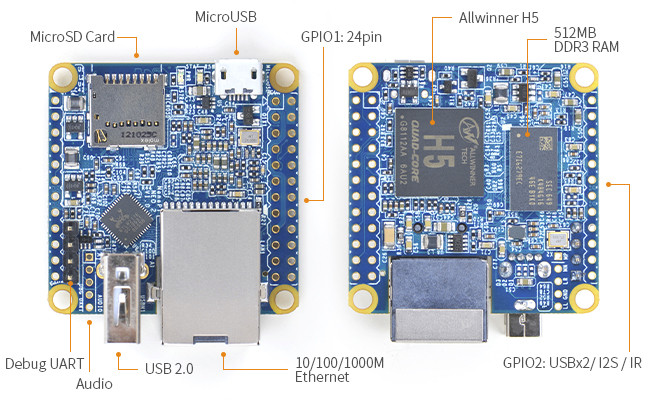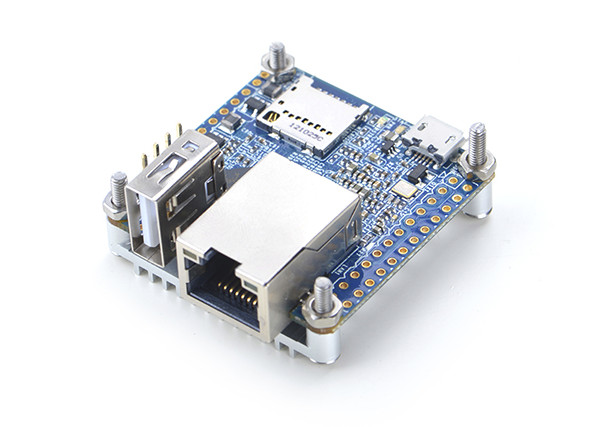NanoPi NEO is a cool little board, and I’ve been using it with Armbian as a 24/7 MQTT + Domoticz server for several weeks without any issues so far. FriendlyElec has now an update with NanoPi NEO2 featuring Allwinner H5 quad core Cortex A53 processor instead of Allwinner H3 Cortex A7 processor, a faster Gigabit Ethernet connection, and a new audio header.
- SoC – Allwinner H5 quad core Cortex A53 processor with an ARM Mali-450MP GPU
- System Memory – 512 MB DDR3
- Storage – micro SD card slot
- Connectivity – Gigabit Ethernet (via RTL8211E-VB-CG chip)
- USB – 1x USB 2.0 host ports, 1x micro USB OTG port, 2x USB via headers
- Expansion headers
- 24-pin header with I2C, 2x UART, SPI, PWM, and power signals
- 12-pin header with 2x USB, IR pin, I2S
- 5-pin audio header with microphone and LINE out signals
- Debugging – 4-pin header for serial console
- Misc – Power and status LEDs
- Power Supply – 5V via micro USB port or VDD pin on headers.
- Dimensions – 40 x 40 mm
One of my reader (Willy) also noticed they included a low-profile Ethernet jack that was asked by some. The company provides an image based on U-boot + Ubuntu Core, as well as hardware and software documentation on their Wiki. That’s not the first Allwinner H5 board we’ve seen, as Shenzhen Xunlong introduced Orange Pi PC 2 at the end of last year, but NEO2 is the first H5 board in such as small form factor.
 Software support for H5 was not quite that good last November, but now Armbian community has released nightly builds for Orange Pi PC 2 based on Linux 4.10, which do seem to work fine for headless operation, but there’s little hope to have Mali drivers, hardware video decoding, and HDMI audio output support any time soon. None of those should matter for NanoPi NEO2 since it does not come with any video output ports, and I’d expect Armbian images to be released for the board soon.
Software support for H5 was not quite that good last November, but now Armbian community has released nightly builds for Orange Pi PC 2 based on Linux 4.10, which do seem to work fine for headless operation, but there’s little hope to have Mali drivers, hardware video decoding, and HDMI audio output support any time soon. None of those should matter for NanoPi NEO2 since it does not come with any video output ports, and I’d expect Armbian images to be released for the board soon.
NanoPi NEO2 is sold for $14.99 + shipping together with 2×12 and 1×12 headers directly on FriendlyARM website. Note that the heatsink is not included by default, and depending on your target application you may want to spend the extra $2.97 to add the heatsink + thermal pad to your order.

Jean-Luc started CNX Software in 2010 as a part-time endeavor, before quitting his job as a software engineering manager, and starting to write daily news, and reviews full time later in 2011.
Support CNX Software! Donate via cryptocurrencies, become a Patron on Patreon, or purchase goods on Amazon or Aliexpress





